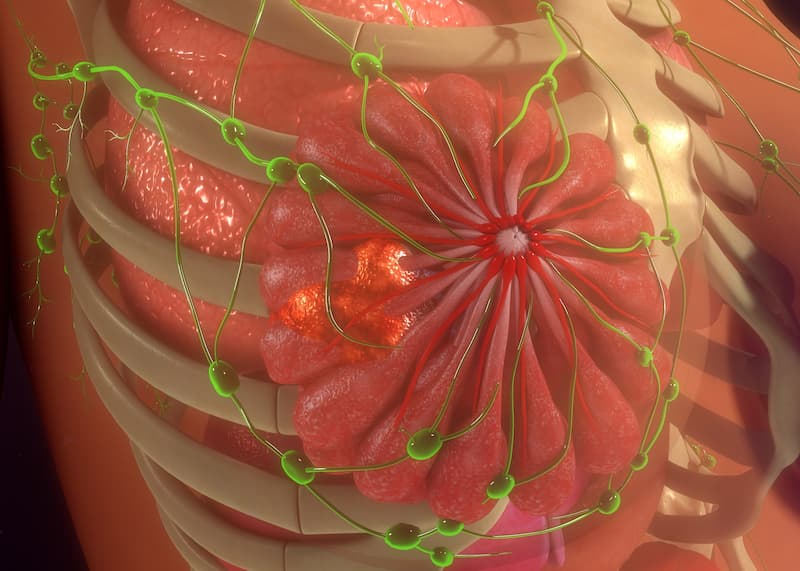Enobosarm Shows Activity, Tolerability in ER+/HER2– Advanced Breast Cancer
Findings from a phase 2 trial support the premise that activating the androgen receptor may elicit antitumor effects in patients with androgen receptor–positive, estrogen receptor–positive, HER2-negative breast cancer.
"These data support further development and assessment of the efficacy of enobosarm and other selective AR activation strategies for the treatment of AR-positive, ER-positive, HER2-negative advanced breast cancer," according to the study authors.

Treatment with enobosarm demonstrated antitumor activity and tolerability in patients with androgen receptor (AR)–positive, estrogen receptor (ER)–positive, HER2-negative advanced breast cancer, according to phase 2 findings from Study G200802 (NCT02463032).
Across the evaluable population, clinical benefit was observed in 32% (n = 16/50; 95% CI, 20%-47%) of patients who received enobosarm at 9 mg and in 29% (n = 15/52; 95% CI, 17%-43%) of those who received the agent at 18 mg. The median progression-free survival (PFS) was 5.6 months (IQR, 2.8-not reached [NR]) and 4.2 months (IQR, 2.7-11.8) in each respective treatment group, and the median time to tumor progression was 5.6 months (IQR, 2.8-NR) and 4.2 months (IQR, 2.7-14.1), respectively. The objective response rate (ORR) per independent radiology review of measurable disease was 0% (n = 0/34; 95% CI, 0%-10%) in the 9-mg group and 2% (n = 1/52) in the 18-mg group, which included 1 partial response (PR).
The ORR in the intent-to-treat (ITT) population was 0% (n = 0/45; 95% CI, 0%-8%) in the 9-mg group and 2% (n = 1/47; 95% CI, 0%-11%) in the 18-mg group, which consisted of 1 PR. Additionally, the median PFS in the ITT population was 5.3 months (IQR, 2.7-13.8) and 2.9 months (IQR, 2.6-13.3) in each respective group, and the median time to tumor progression was 5.3 months (IQR, 2.7-13.8) and 2.9 months (IQR, 2.6-14.1).
“The data from this study provide proof-of-concept for the activity and safety of a novel selective AR modulator [SARM], enobosarm, in AR-positive, ER-positive, and HER2-negative metastatic breast cancer, thus supporting the premise that activating AR can exert anti-tumor effects,” the study authors wrote. “Enobosarm was found to be well tolerated with no negative effects on quality of life. These data support further development and assessment of the efficacy of enobosarm and other selective AR activation strategies for the treatment of AR-positive, ER-positive, HER2-negative advanced breast cancer.”
In this phase 2 study, patients were randomly assigned to receive enobosarm at 9 mg (n = 50) or 18 mg (n = 52) orally once a day for a maximum of 24 months or until progressive disease, unacceptable toxicity, death, or study discontinuation.
The primary end point was the clinical benefit rate at 24 weeks among patients with centrally confirmed AR positivity of at least 10% based on RECIST v1.1 guidelines. Secondary end points included ORR, best overall response, PFS, time to tumor progression, and DOR. The study included patient-reported health status based on the EQ-5D VAS as a tertiary end point.
Patients with at least 1 prior line of endocrine therapy and initial endocrine sensitivity based on a 3-year disease-free interval in the adjuvant setting or 6-month PFS on endocrine treatment for metastatic disease were able to enroll on the trial. Other eligibility criteria included having an ECOG performance status of 0 to 2 and measurable or non-measurable bone-only disease per RECIST v1.1 guidelines.
The median age was 60.5 years (IQR, 52.3-69.3) in the 9-mg group compared with 62.5 years (IQR, 54.0-69.3) in the 18-mg group. In each respective group, most patients had progesterone receptor–positive disease (80% vs 75%), bone-only disease (38% vs 33%), and prior treatment with chemotherapy (90% vs 94%). The median number of prior adjuvant, neoadjuvant, and advanced setting endocrine therapy regimens was 2 (IQR, 2-3) in the 9-mg group and 3 (IQR, 2-3) in the 18-mg group.
No significant changes in EQ-5D VAS scores were reported in the 9-mg group (P = .93) or the 18-mg group (P = .54). Less than half of the patients of each treatment group had a worse health profile during each treatment period compared with baseline.
Any-grade treatment-related adverse effects (TRAEs) affected 65% (n = 49/75) of those in the 9 mg group compared with 69% (n = 42/61) of patients who received enobosarm at 18 mg. Additionally, grade 3/4 TRAEs occurred in 8% (n = 6/75) and 16% (n = 10/61) of patients in each respective group, which included increased hepatic transaminases (4% vs 3%), hypercalcemia (3% vs 3%), and fatigue (1% vs 3%).
Treatment discontinuation due to disease progression was highlighted in 85% (n = 61/72) and 78% (n = 50/64) of patients in the 9 mg and 18 mg groups, respectively. One patient in the 9-mg group died following acute kidney failure, and 3 patients in the 18-mg group died following hypertension and cardiac failure, anemia and bone marrow failure, and sepsis.
Reference
Palmieri C, Linden H, Birrell SN, et al. Activity and safety of enobosarm, a novel, oral, selective androgen receptor modulator, in androgen receptor-positive, oestrogen receptor-positive, and HER2-negative advanced breast cancer (Study G200802): a randomised, open-label, multicentre, multinational, parallel design, phase 2 trial. Lancet Oncol. 2024;25(3):317-325. doi:10.1016/S1470-2045(24)00004-4.
Gedatolisib Combo With/Without Palbociclib May Be New SOC in PIK3CA Wild-Type Breast Cancer
December 21st 2025“VIKTORIA-1 is the first study to demonstrate a statistically significant and clinically meaningful improvement in PFS with PAM inhibition in patients with PIK3CA wild-type disease, all of whom received prior CDK4/6 inhibition,” said Barbara Pistilli, MD.